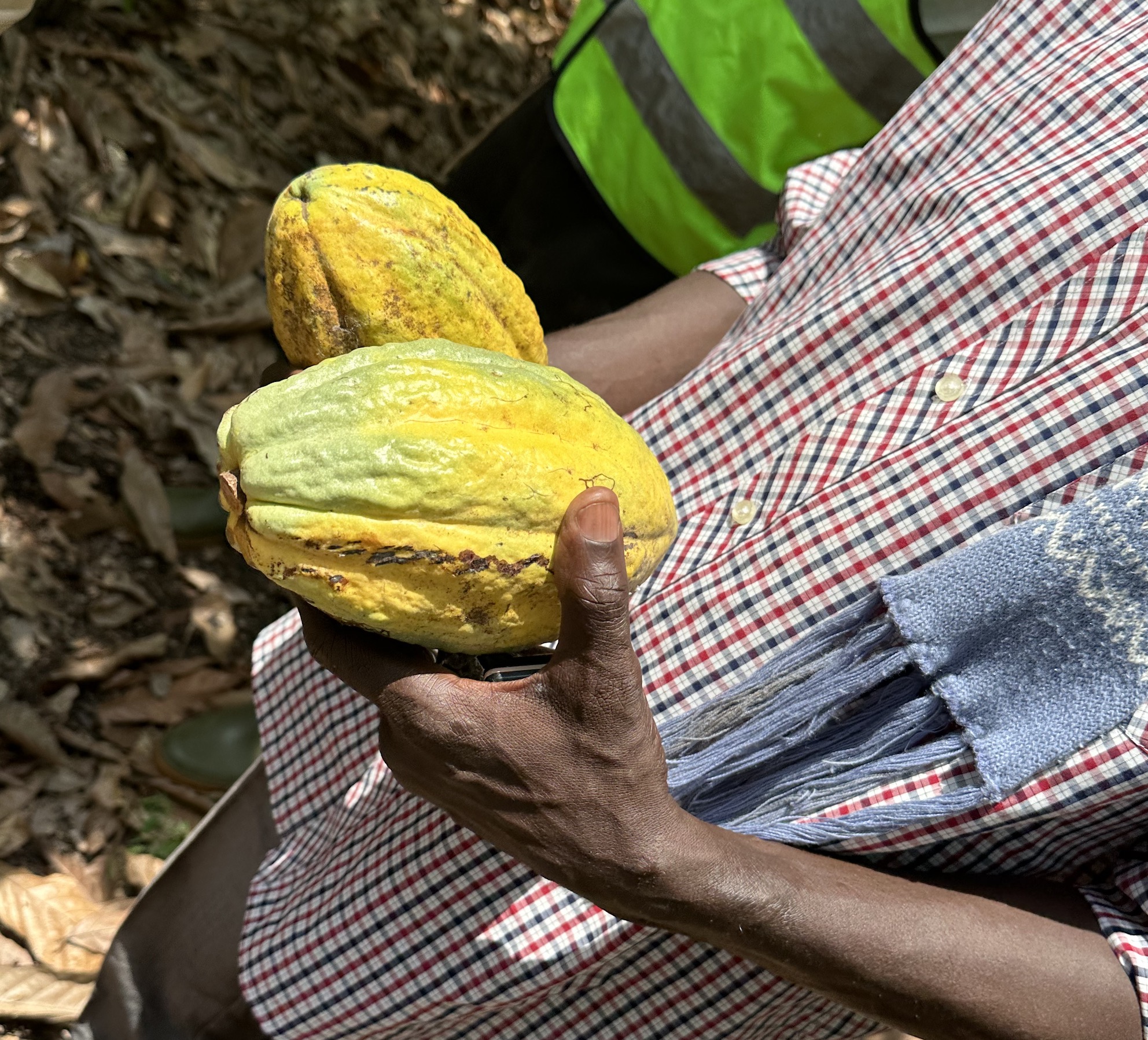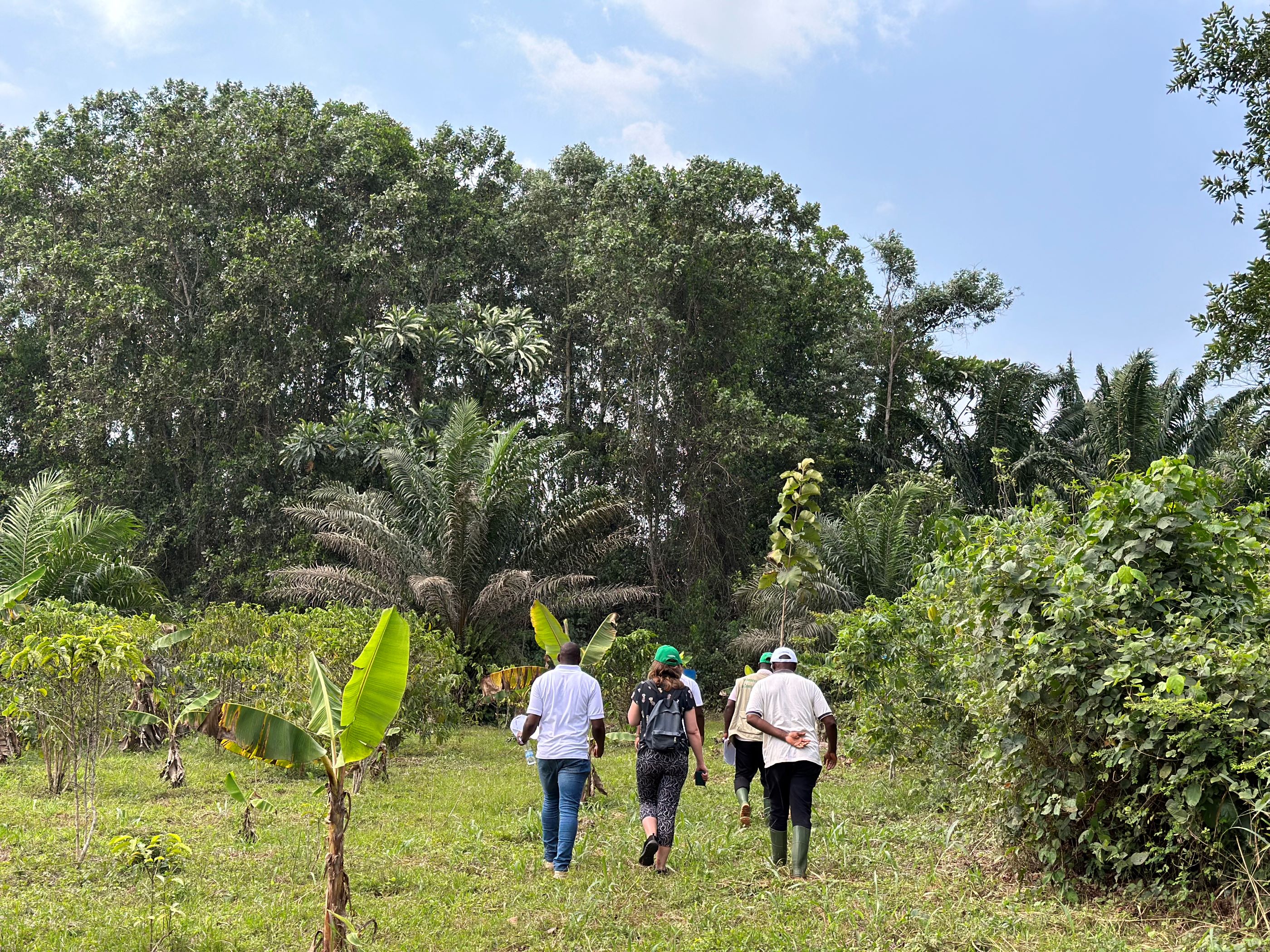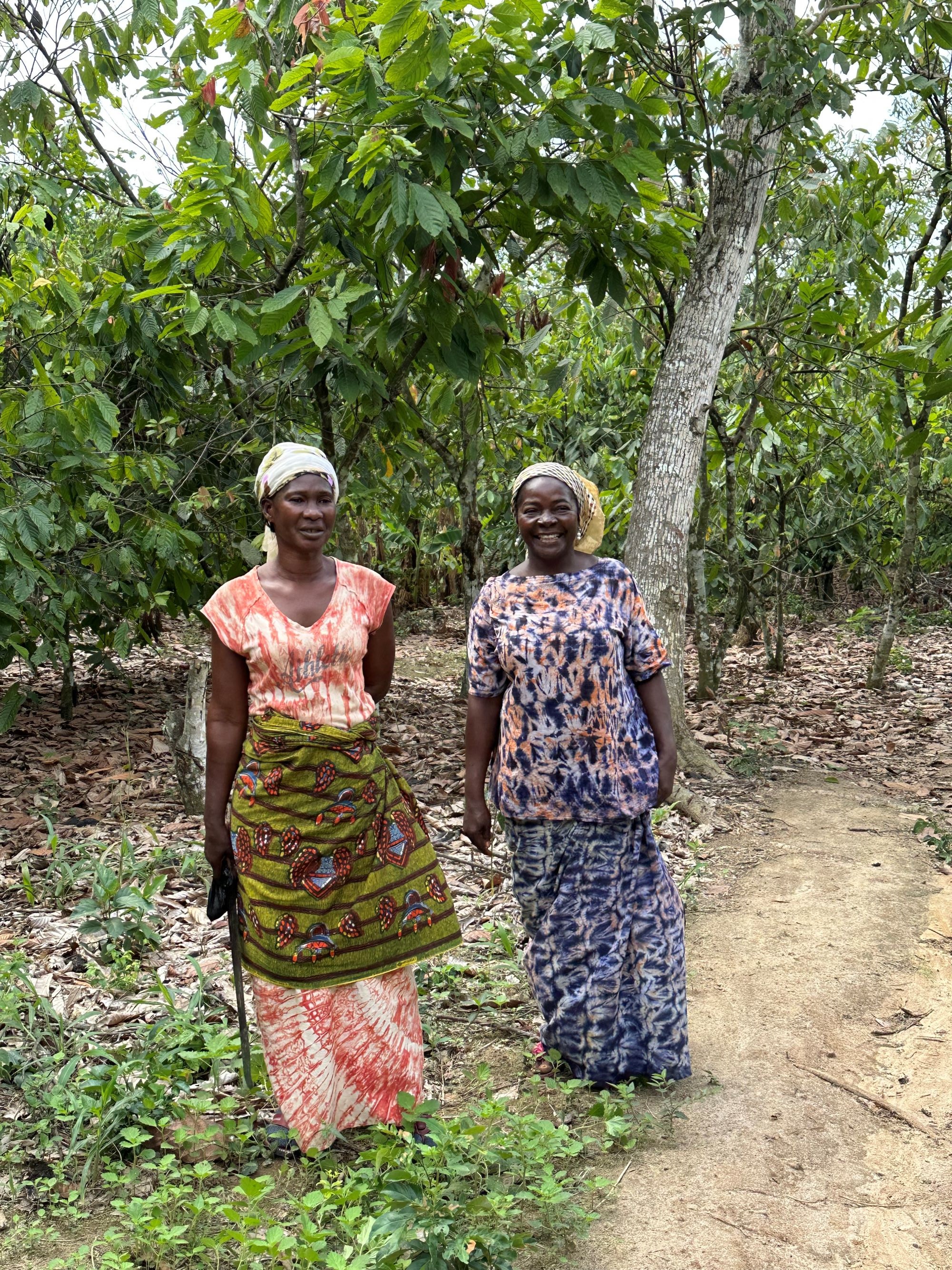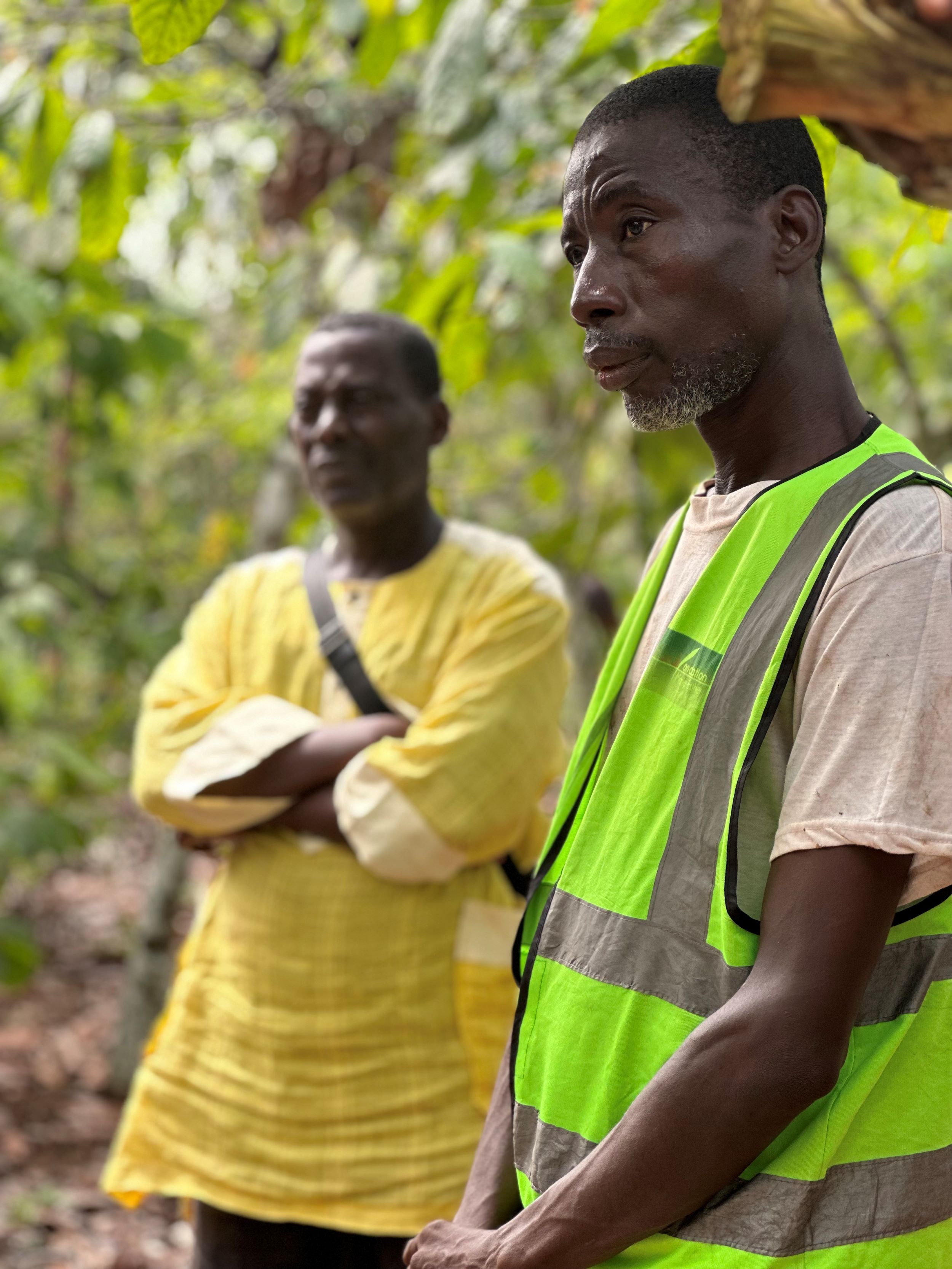Promoting zero-deforestation cocoa production for reducing emissions in Côte d'Ivoire (PROMIRE)

©FAO/Amanda Bradley
| Countries | Côte d'Ivoire | ||||||||||
|---|---|---|---|---|---|---|---|---|---|---|---|
| Start date | 18/02/2021 | ||||||||||
| End date | 19/02/2026 | ||||||||||
| Status | Ongoing | ||||||||||
| Objective / Goal |
|
||||||||||
| Partners |
PROMIRE is co-funded by the Green Climate Fund (GCF), FAO and the Republic of Côte d’Ivoire. |
||||||||||
| Activities |
The project encourages farmers to engage in agroforestry cocoa production by supporting the rehabilitating of cocoa plots, establishing nurseries, providing training on organic and fair-trade cocoa production techniques and strengthening access to markets. The two agroforestry systems established in PROMIRE follow the guidelines developed by the Conseil Café Cacao (CCC) in Côte d’Ivoire. These guidelines for the design and implementation of cocoa agroforestry systems aim to maintain cocoa production levels while improving ecosystem services through shade trees. They call for:
These guidelines, while specific in some respects, allow practitioners to consider a wide range of different agroforestry configurations. The bases for the two agroforestry models implemented in the project are presented below, but it is important to note that these are not static models. The final design of each system depends on the needs and desires of farmers, as well as the context of their specific plots.
|
||||||||||
| Impact |
The project supports 3,650 smallholders in the transition to zero-deforestation cocoa production, which will increase their productivity and incomes through crop diversification as well as the higher prices fetched by certified cocoa. In addition to the sale of cocoa, the agroforestry species introduced, such as fruit trees, allow producers to earn additional income and can improve nutritional security. For example, Kplé (Irvingia gabonensis), commonly used as a local fruit tree species with a high degree of compatibility with cocoa, presents commercial opportunities as seeds sell for between 1000-2500 CFA/kg on local markets. The same applies to Petit Kola (Garcinia kola) and Akpi (Ricinodendron heudelotii). In addition, the value of the timber at the end of the conservation commitment period (20 years) will provide producers with additional income in the long-term. At an environmental level, the shade trees introduced in the cocoa production systems help improve the health of the plot as well ensure longevity of the cocoa trees. The fertilizer tree species also help to improve soil fertility, all of which can improve productivity. As a climate change mitigation project, PROMIRE's activities are expected to reduce emissions by 5.5 million t.eq.CO2 over the 20-year life of the project, through the agroforestry components as well as assisted natural regeneration of forests.
|




